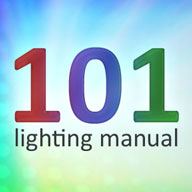jhinkle
New elf
- Thread starter
- #16
You can creat your own custom effect and place then on the HLS Pixel Plane
HLS provides you with a plane of pixel so you can present just about anything.
HLS allows you to place any HLS primitave effect on the Plane.
You can Place and modify a Nutcracker effect on the Plane.
This post will show you how to create your own effects an place them on the Plane.
HLS PixelPlane file import accepts a TEXT file. Doesn't need a TXT file extension - just make sure there are no formatting codes contained within.
Each line in the file represents a PIXEL. Each number with that line represents the RGB value of that pixel for a given time tic. RGB values a delimited by a space.
Example:
0 0 255 0 0 255
255 0 0 0 0 0
0 255 255 255 0 0 0
This simple example has 3 pixels and the effect is for 6 time slots. At a 50 msec resolution - that's a quater of a sec of pixel activity
A word about RGB values.
You need to make sure to generate the RGB values properly.
Vixen, which uses dot NET generates RGB backwards from what native mode Micrsoft C++ generates them.
Sean (Nutcracker) generates then the same as Vixen.
Don't worry - I correct then for native mode processing.
If you use native mode software - you will need to convert them as shown below.
RGB is a 24 bit number with red being 8 bits or 1 byte, green being 1 byte and blue being 1 byte.
The 3 color bytes are packed together as follows
Red is in bits 24 - 17
Green is in 16 - 9
Blue is in 8 to 1
If you want to have a Pixel Plane that consists of just 1 or 2 strings - try making you own effect file.
Remember - after you load it into HLS - you can change the timing to make it run half, third, or quater speed.
Enjoy.
Joe Hinkle
HLS provides you with a plane of pixel so you can present just about anything.
HLS allows you to place any HLS primitave effect on the Plane.
You can Place and modify a Nutcracker effect on the Plane.
This post will show you how to create your own effects an place them on the Plane.
HLS PixelPlane file import accepts a TEXT file. Doesn't need a TXT file extension - just make sure there are no formatting codes contained within.
Each line in the file represents a PIXEL. Each number with that line represents the RGB value of that pixel for a given time tic. RGB values a delimited by a space.
Example:
0 0 255 0 0 255
255 0 0 0 0 0
0 255 255 255 0 0 0
This simple example has 3 pixels and the effect is for 6 time slots. At a 50 msec resolution - that's a quater of a sec of pixel activity
A word about RGB values.
You need to make sure to generate the RGB values properly.
Vixen, which uses dot NET generates RGB backwards from what native mode Micrsoft C++ generates them.
Sean (Nutcracker) generates then the same as Vixen.
Don't worry - I correct then for native mode processing.
If you use native mode software - you will need to convert them as shown below.
RGB is a 24 bit number with red being 8 bits or 1 byte, green being 1 byte and blue being 1 byte.
The 3 color bytes are packed together as follows
Red is in bits 24 - 17
Green is in 16 - 9
Blue is in 8 to 1
If you want to have a Pixel Plane that consists of just 1 or 2 strings - try making you own effect file.
Remember - after you load it into HLS - you can change the timing to make it run half, third, or quater speed.
Enjoy.
Joe Hinkle

